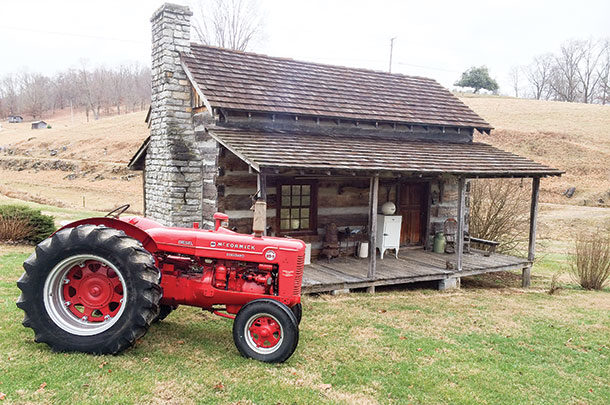Some tractors in the 1930s and early ’40s, like the Oliver 70 KD (kerosene distillate) and International Harvester’s Farmall H and M models, actually started on gas then switched over to kerosene once the engine warmed up. This was important because kerosene was significantly cheaper than gas. Tractor manufacturers gradually began to utilize diesel power in their machines.
There would be some challenges for farmers, especially when it came to cold starts, but since diesel fuel was cheaper than gas and there were substantial horsepower gains, they were willing to work with it.
In the late ’40s and ’50s, when the use of diesel was still in the early stages, there were no engine block heaters, glow plugs or manifold heaters to assist diesel engines starting in cold weather, but manufacturers got very creative when it came to developing methods to help deal with this problem.
My fascination with gas-start diesels began about 15 years ago. A friend of mine had a WD-9 with the D-335 engine (335 cubic inches) that he had practically quit tractor-pulling, so he suggested that I continue pulling it.
We had to start this tractor by hand, but it was set up just right, which made it start on the first jerk almost every time. The WD-9 was a very strong puller and was a first- or second-place tractor in all three classes it pulled.
So what on earth is a gas-start diesel, you ask? It’s easy to see the confused look on people’s faces when I start explaining to them how this works. One side of the engine looks like a gas engine with spark plugs, carburetor, distributor and a small gas tank. The other side looks like a diesel engine with the fuel injection pump, injectors and fuel filters. So the answer is: It’s both.
You first crank the tractor on gas and let it run for about five minutes or so to warm the combustion chambers. When you think it’s ready, slowly lower the throttle lever until you notice the exhaust change color. That’s when you know it’s time to throw the compression release lever, which cuts out the carburetor and ignition power and automatically changes the compression ratio. The tractor is then solely running on diesel power.
This brings us to my favorite IH tractor, my 1955 McCormick Super WD-9 with factory power steering and the D-350 gas-start diesel engine (350 cubic inches, 65 belt hp and about 58 drawbar hp). My dad bought this tractor for me as a birthday gift from the guy that had the WD-9. Every time I would go get the WD-9, I would go to the barn where the Super WD-9 was to check on it.
I recall it sitting there under what seemed like 3 inches of tobacco dust and leaves from several years of burley tobacco hanging up in the barn above it to cure. The engine was seized, and it was lying on its side in the frame where they had been attempting to push out the stuck pistons. I couldn’t believe how nice the sheet metal was since it had been lying around the barn so long.
On a weekend trip home from pharmacy school (around my birthday), Dad needed me to take a ride with him. We ended up at a buddy’s shop, walked in – and there it was on jack stands under a fresh coat of shiny IH red paint.
All the work up to that point was easy. The real work would come when we started looking for a good motor and head for it. After having the original head checked at the machine shop, we discovered that it was cracked. We found a complete D-350 engine without much trouble, but its head was cracked too.
We considered having the best of the cracked heads repaired – but decided to keep looking for a good original.
We called all over the country and asked almost everyone we came in contact with to help us find a head. Finally, an IH collector friend I had made while attending pharmacy school in northern Virginia called. He had found a complete D-350 engine that had been disassembled. The owner had intended to rebuild it, so we felt fairly confident that the head had already been checked and that it would work for us.
Sure enough, it passed the checks at the machine shop and we were back in business. The very first time it left our shop, it went straight on the trailer to my first summer show with the Old Glade Antique Tractor Association in Abingdon, Virginia.
There seems to be a consensus that improper shutdown procedures have led to the shortage of good heads for these engines and, ultimately, the downfall of these tractors. The proper shutdown procedure is to switch the engine back to gas to allow it to cool down before completely shutting it down. Some collectors and salvage folks we talked to have stopped dealing in gas-start diesels for this reason.
The IH tractors that use the D-350 engine are the Super WD-9, 600, 650 and some TD-9 crawlers and stationary power units as well as power plants in other equipment. These machines are very unique, so please check one out if you get the chance. ![]()
PHOTO: This 1955 McCormick Super WD-9 stands with our restored log cabin that was Fugates Hill Post Office in the mid-1860s, located at Fugates Hill, Virginia. Photo by Lance Phillips.












